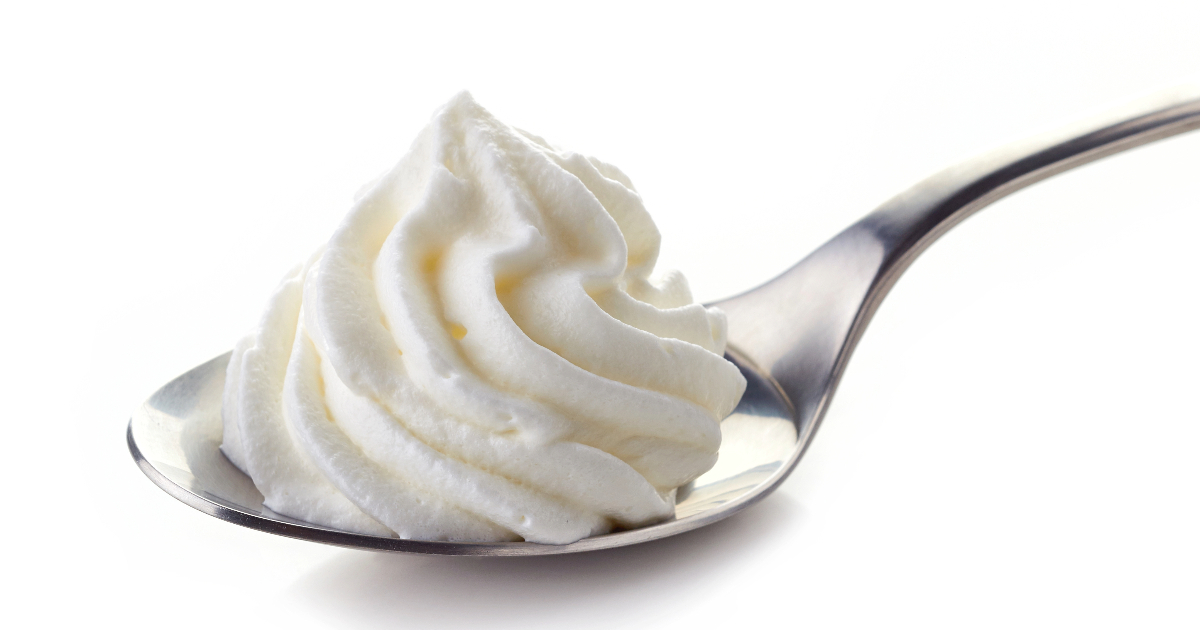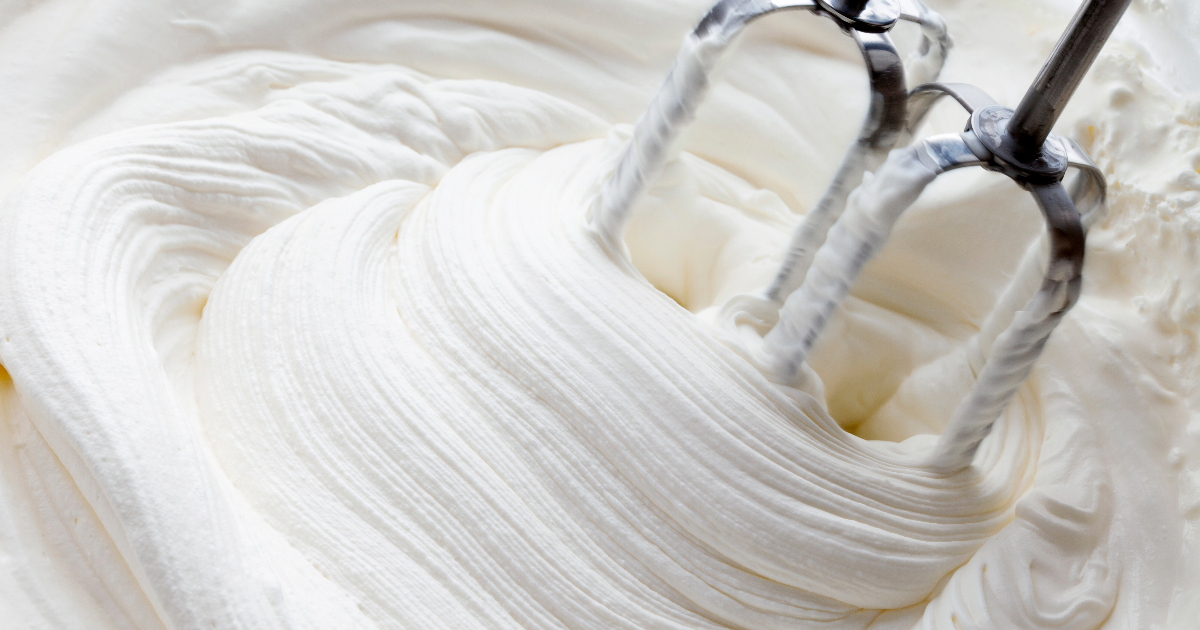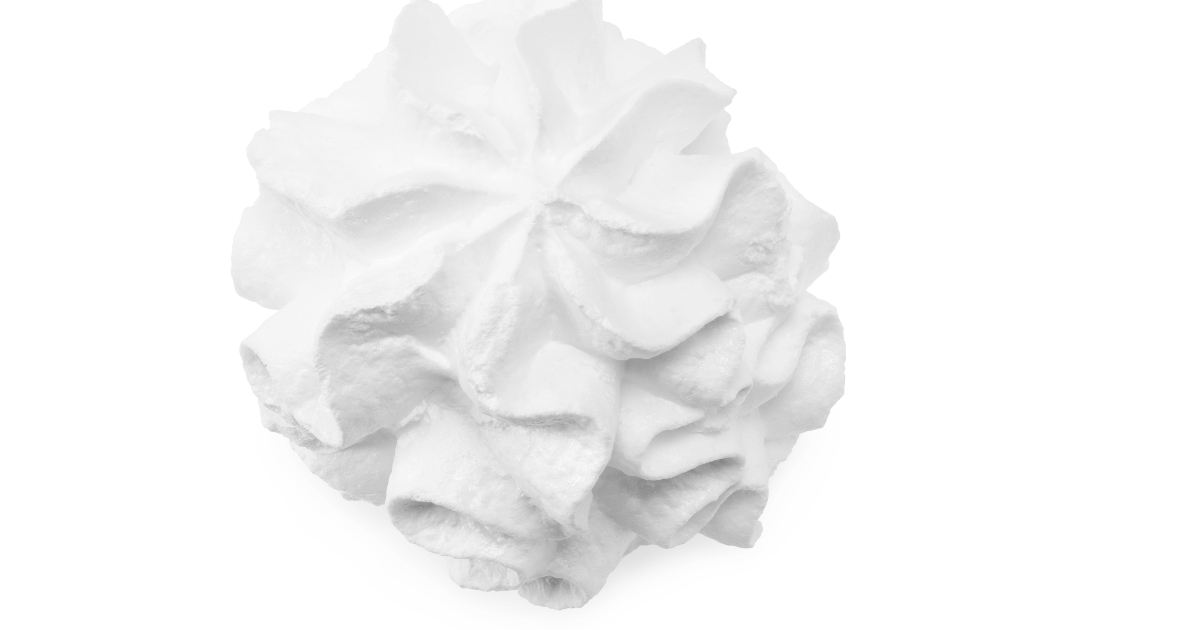Whipping cream is a versatile dairy product that is a staple ingredient in many desserts and savory dishes.

But what exactly is whipping cream? How is it made and used?
We will explain everything you need to know about whipping cream, from its ingredients and nutrition to proper storage and substitutes.
What is Whipping Cream?
Whipping cream, also known as heavy cream, is a dairy product made from the fatty portion of milk. Fresh, unhomogenized milk naturally separates into milk and cream, with the high-fat cream rising to the top. This top layer of thick, fatty cream is then skimmed off and processed to make whipping cream.
Whipping cream typically contains between 30-40% milk fat, giving it a rich, creamy texture and indulgent taste. The high-fat content allows air bubbles to be incorporated into the cream through whipping or beating, creating a light, airy foam that can hold its shape. This is how whipped cream is made.
Compared to other dairy products, whipping cream has a much higher fat percentage than milk or half-and-half, but less fat than butter. The exact specifications differ between products:
- Heavy whipping cream must contain at least 36% milk fat. It is sometimes labeled "heavy cream."
- Whipping cream, also called "light whipping cream," contains 30-35% milk fat.
The difference in fat percentage affects the consistency and stability of whipped cream - heavy cream makes a thicker, stiffer whipped cream while whipping cream makes a lighter, airier whipped cream.
How is Whipping Cream Made?

Whipping cream is made through a process called separation and homogenization:
- First, fresh milk is separated into cream and skim milk through centrifugation. The high-fat cream floats to the top and is skimmed off.
- Next, the separated cream is homogenized, which breaks up the fat globules into smaller sizes. This helps create a smoother, more stable emulsion.
- The homogenized cream is then pasteurized by heating to at least 160°F (71°C) for 15 seconds. This kills harmful bacteria and extends shelf life.
- Finally, additives like carrageenan or sodium caseinate may be mixed in to further stabilize the cream.
The resulting whipping cream product has a rich, creamy texture ideal for whipping into light, airy foams. The higher the fat content, the better it whips up.
Nutrition Facts of Whipping Cream
Due to its high-fat content, whipping cream is very high in calories:
- 1 tablespoon of heavy whipping cream has about 50 calories, 5g fat, and 3.5g saturated fat
- 1 tablespoon of whipping cream or light whipping cream has about 35 calories, 4g fat, and 3g saturated fat
So while whipping cream adds rich flavor and texture to foods, it is very dense in calories and should be enjoyed in moderation.
The fat in whipping cream is primarily saturated fat. However, research on dairy fat and heart health has shown mixed results, with some studies suggesting dairy fat may have a neutral or even beneficial effect on heart disease risk factors.
Whipping cream is also a good source of fat-soluble vitamins A, D, E, and K. Vitamin A is important for immune function and eye health, while vitamin D supports bone health.
How to Make Whipped Cream from Whipping Cream

One of the most popular uses of whipping cream is making whipped cream. Here's a simple process:
- Chill the cream, mixing bowl, and beaters so everything is cold. This helps the cream whip up better.
- Pour cold whipping cream into the chilled bowl. Use heavy cream or whipping cream with 30%+ fat.
- Beat the cream starting on low speed, then increasing to high. Beat until soft peaks form.
- Add sugar or vanilla once soft peaks start to form to flavor it.
- Beat until stiff peaks form, being careful not to overbeat.
- Refrigerate whipped cream until ready to use, for up to 2 days.
Tips for best results:
- Use heavy cream for firmer whipped cream that holds its shape longer.
- Add stabilizers like gelatin if you need the whipped cream to be very stable.
- Under-whip slightly if you will refrigerate whipped cream for later use.
Whipped cream adds a light, creamy texture, and sweet flavor to so many desserts. It's perfect for topping cakes, pies, ice cream sundaes, milkshakes, waffles, and more!
How to Use Whipping Cream in Cooking and Baking

Besides making whipped cream, whipping cream has many culinary uses due to its rich texture and indulgent taste.
In savory cooking, heavy cream can provide a luxurious, creamy mouthfeel to soups, sauces, casseroles, and more:
- Make cream-based soups like bisques, chowders, or wild rice mushroom soup.
- Add body and richness to pasta sauces, like an indulgent mushroom and bacon carbonara.
- Stir into risottos or grits just before serving for extra creaminess.
- Mix with cheeses, herbs, and spices to make easy cream sauces for seafood, chicken, or steak.
In baking and desserts, whipping cream helps create decadent custards, mousses, ice creams, and more:
- Make classic creme brulee, pots de creme, or vanilla bean custard.
- Fold whipped cream into chocolate mousse or berry mousse.
- Add body and richness to homemade ice creams and sorbets.
- Mix with mascarpone cheese to make an easy tiramisu filling.
- Top cakes, pies, cupcakes, waffles, pancakes, or fruit salads.
No matter what you're making, a splash of whipping cream can add indulgence, moisture, and creamy texture to both sweet and savory recipes.
Whipping Cream Substitutes
If you don't have whipping cream on hand, several ingredients can be used as substitutes:
- Milk and butter - Mix 1/4 cup melted butter into 3/4 cup milk
- Evaporated milk - Chill and whip it just like whipping cream
- Powdered creamer - Reconstitute with water to make "heavy cream"
- Greek yogurt - An equal amount of full-fat yogurt can mimic thickness
- Coconut cream - Refrigerated solids from a can of coconut milk
- Tofu - Blended silken tofu can replace whipping cream
- Vegan whipping cream - Made from oils like coconut or soybean
For a simple whipped cream substitute, Cool Whip or other frozen whipped topping can be used, though homemade always tastes better!
When selecting a whipping cream substitute, choose options with higher fat content to best mimic the richness. Test the substitute in a small amount of the recipe first before substituting in the full quantity.
How to Store Whipping Cream
Since whipping cream is a dairy product, proper storage is important for safety and quality.
- Refrigerate whipping cream in the coldest part of the fridge, 39°F (4°C) or below.
- Keep heavy cream sealed in its original container or an airtight container.
- Use within 1 week of the "best by" date for peak freshness.
- Do not freeze whipping cream, as this can cause separation.
- Refrigerate whipped cream in an airtight container, using within 2 days.
- Store specialty cream products like half-and-half and Cool Whip according to package instructions.
With proper refrigerated storage, whipping cream will maintain its fresh, creamy flavor to use in your cooking and baking recipes.
FAQ
What's the difference between heavy whipping cream and whipping cream?
Heavy whipping cream contains 36-40% milk fat while whipping cream (also called light whipping cream) contains 30-35% milk fat. The higher fat content of heavy cream makes it better for whipping and holding its shape.
Does whipping cream need to be refrigerated?
Yes, always refrigerate whipping cream since it is a dairy product. Keep it stored at 39°F (4°C) or below for food safety and to maintain freshness.
How long does whipping cream last in the fridge?
Properly stored in the fridge, whipping cream lasts for 5-7 days past the "best by" date on the carton. Keep refrigerated until ready to use.
Can you freeze whipping cream?
No, do not freeze whipping cream. The emulsion will break and the liquid can separate. Refrigeration is best for storing whipping cream.
Is canned whipping cream as good as homemade?
Freshly whipped cream made from whipping cream has a richer, fresher taste. But canned whipped cream is more convenient if you need it on short notice.
Conclusion
Whipping cream is a high-fat cream skimmed from the top of milk, containing at least 30% milk fat up to around 40% fat.
Its rich texture makes whipping cream perfect for creating decadent whipped cream or adding indulgence to desserts, ice creams, pasta, soups, and more.
Just be mindful of enjoying whipping cream in moderation, storing it properly in the fridge, and substituting lower-fat options if needed.
With its versatile uses both sweet and savory, whipping cream can add a delicious creamy touch to all sorts of recipes.

